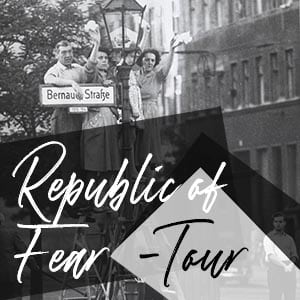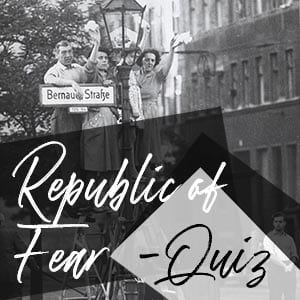How absurd that of all the stunning buildings in Berlin – the triumphal Prussian Brandenburg Gate, the magnificent UNESCO-listed Museum Island – that the one landmark that has come to be most synonymous with the name of the city is built of simple reinforced concrete.
A monument to the ideological conflict of the Cold War that defined much of the 20th century. The Berlin Wall.
Constructed at a time when the world seemed to be teetering on the brink of nuclear annihilation, the Berlin Wall transformed the city overnight. As the East German government took desperate measures to keep their own population from fleeing to the Western sectors of divided Berlin, a concrete barrier over 150 km long was constructed around that very capitalist island of the West.
Creating something of a paradoxical prison.
Ironically where the only people who were free were the prisoners encircled. Free to leave. Free, eventually, to visit the East. Free to rock. Free to roll. Free to vote for various competing political parties, and free to cover the blank canvas of this monstrous concrete barrier in graffiti and slogans calling for its much overdue removal.
The images and graffiti tags daubed on this once daunting fortification have become emblematic of its existence. To tour the Berlin Wall now is to expect to be confronted with a chiselled mass of reinforced concrete and colourful murals. And in many places that is exactly what can still be found.
Alongside the Leaning Tower of Pisa, the Great Wall of China, Tower Bridge in London – the Berlin Wall now stands as a listed monument of historical significance.
To tour Berlin without seeing, and touching, the Wall would be a journey incomplete.
Although many pieces have been transported across the world to be exhibited – in London outside the Imperial War Museum, at Fulton University where Winston Churchill gave his famous ‘Iron Curtain’ speech – there still remains much to be seen in the city. If you know where to look.
We’ve compiled ten reasons why you should tour the Berlin Wall:
01. The Pure Historical Significance
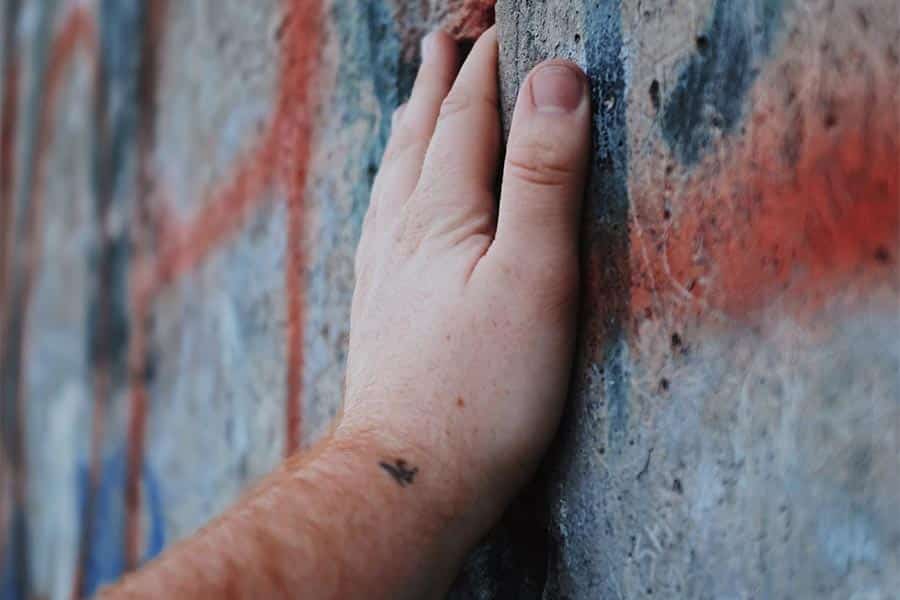
The ‘Sixities’ were dangerous and unpredictable days. The two superpowers of the United States and the Soviet Union were engaged in confrontation, using both conventional military and unconventional psychological means, across the globe – in as far flung places as the Congo, Cuba and, of course, Berlin.
The period following the defeat of Nazi Germany in 1945, now known as the ‘Cold War’, was a period of proxy wars. Representative engagements fought between these two superpowers, on foreign soil, as a battle of ideologies was being waged. Berlin sat directly on the fault line between East and West.
Divided amongst the victorious powers in 1945, shared between the British, the French, the US, and Soviet forces. The city became an ideological frontier.
A measure of meaning.
The point where two opposing worldviews collided – that of the capitalist West and the Marxist-Leninist East.
Faced with the mass exodus of population that had taken place between 1949 and 1961, whereby nearly 3 million East German citizens fled to the Western sectors, the government of the German Democratic Republic (GDR – or DDR in German) first sought to secure its borders by establishing a military frontier with West Germany. First the ‘Iron Curtain’ was solidified in 1952.
Then came the Wall.
Or the “Anti-Fascist Protection Rampart” as it was officially known.
As West Berlin, the island of capitalism inside East Germany, served as a point of exit for fleeing East Germans, specifically between 1952 and 1961, the East German government decided to finally cut off access to the Western sectors of the city by surrounding this island with an impenetrable barrier.
Not to be deceived by the name, the Berlin Wall grew to be more than just a wall, it was a series of obstacles sandwiched between two walls.
The inner and outer walls, with a ‘death strip’ or ‘kill zone’ in-between. It stood as a symbol of all that was wrong with the Soviet system. A system that had to be imposed by force and maintained by fear. A system that denied the citizens of the state the ability to leave the country, and thus denied them the choice to remain. Making a fiction of the idea of any real participation in the system they were expected to believe in.
Until that fateful night in November 1989, when the whole house of cards came tumbling down.
Taking the wall and all that it stood for with it.
02. The Inspiring Escapes (& The Tragic Deaths)
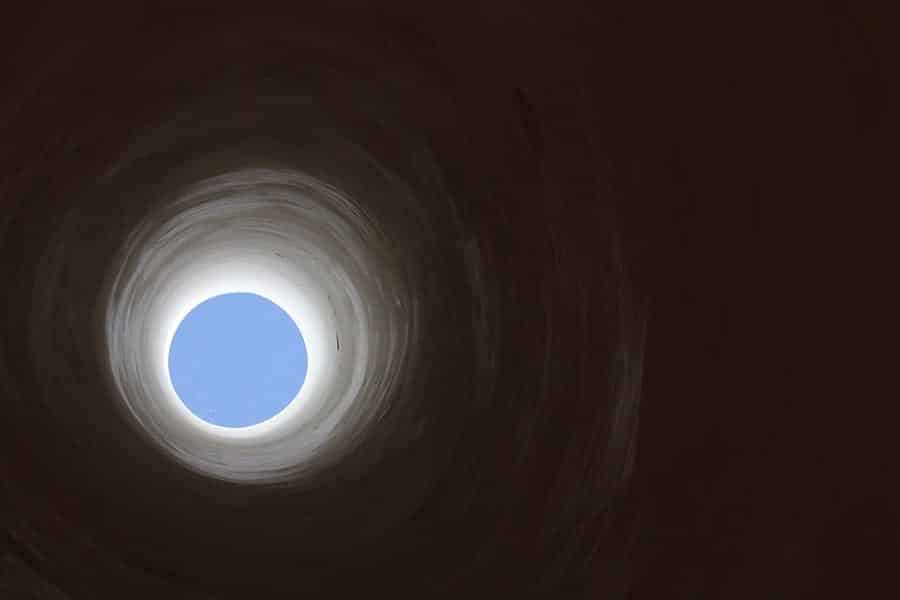
If you choose to trace the path of the Berlin Wall now, as it snaked around West Berlin, you will be confronted with a plethora of commemorative plaques and ‘places of memory’ recording the actions of the people who died whilst trying to escape from East to West – and the many more who succeeded in fleeing.
Between 1961 and 1989, more than 5,000 people managed to escape to West Berlin, despite the Berlin Wall. Any method you can think of, it’s likely that someone tried to escape using it, and perhaps succeeded. Hot air balloons, tunnels, elaborate smuggling operations, disguises, explosives, speeding cars, trains, buses. The list goes on.
The Museum Haus am Checkpoint Charlie has an extensive collection of items that people used to aid their escape, including a converted car and improvised diving equipment.
At the official Berlin Wall Documentation Centre (Gedenkstätte Berliner Mauer) on Bernauer Strasse, there is a memorial to the 139 known victims of the Berlin Wall – from Ida Siekmann, the first known victim, to Winfried Freudenberg, the last.
The deaths recorded here are sadly as tragic as the escapes are inspiring, Ida Siekmann’s being a foretelling of things to come. Living on the border with West Berlin, in an apartment on Bernauer Strasse, Siekmann was cut off from her sister when the first stage of the Berlin Wall was constructed in the early hours of 13th August 1961. Her sister was living in the neighbouring district of Wedding, then part of the French sector. As Siekmann sought to jump from her apartment building into the Western sector, she hit the pavement below and died from the injuries she sustained in the fall.
The first victim of the Berlin Wall, soon to be followed by Günther Litfin – the first person killed by the East German authorities trying to escape.
To learn more about Litfin, visit our previous blog post.
We have compiled a list of some of the strangest Berlin Wall Escapes you can also read here: Berlin Wall Escapes.
03. Follow The Mauerweg Road (The Berlin Wall Way)
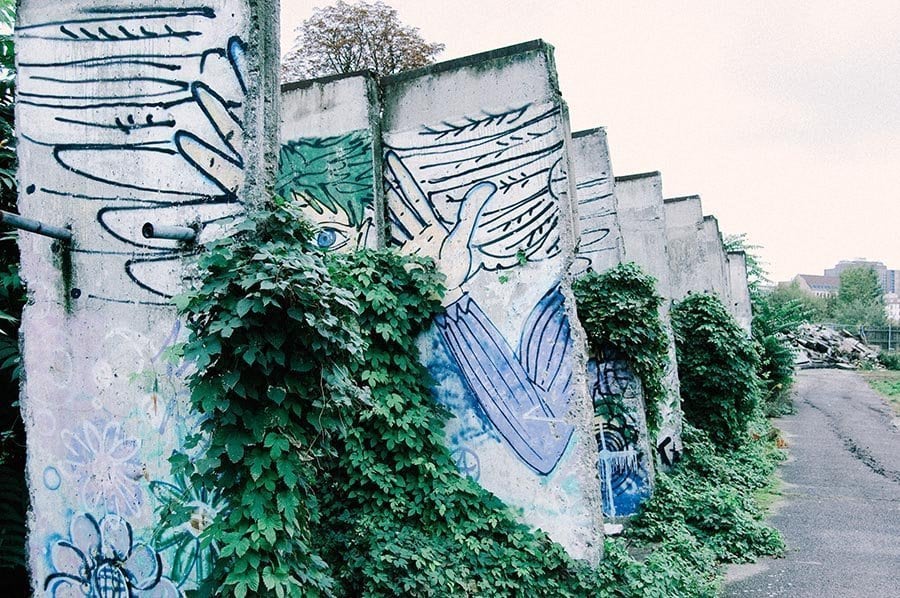
Clocking in at over 150km in length, the Berlin Wall was a lot longer than most people realise.
In surrounding West Berlin, the East German authorities were faced with the necessity of making space, where necessary, for the ‘Death Strip’ of the Wall.
Destroying houses, slicing through cemeteries and disinterring bodies from graves, all to establish an exclusion zone the border guards could better maintain, to prevent any attempted escapes to the West.
The Mauerweg is the legacy of what once consisted of this death strip. Partly preserved for posterity, partly because of the way Berlin seems to embrace greenery and open spaces.
This trail traces the course of the Berlin Wall as it encircled the former Western sectors of the city, combining the area that East German border troops once used to police and the patrol road used by West Berlin customs officials.
To tour the entire length is quite a task, although worth it for the scenery and the dozens of information boards explaining the historical significance of the area you’ll find along the way. Expect to see many Berliners out taking in the air, walking their dogs, and the more adventurous ones biking the Wall. The whole route can be covered either by foot or with a bicycle. Choosing the latter will take at least a day (for those with strong legs), although we recommend making a couple of days of it – there are restaurants and hotels to stop off at.
The route is fully signposted, you can start your Mauerweg tour by following the more than 40km of cobblestone (pictured above) trail plotted through the city.
As of 2018, we now offer bike tours of the Berlin Wall (in conjunction with Steel Vintage Bikes) – as both a single day and double day option – if you’re looking to cover the major parts of the route or even trace the entire stretch of the Berlin Wall by bike over the space of two days (we make arrangements for a scheduled night in a hotel to break up the riding).
04. It's Not Just Concrete - It's Art
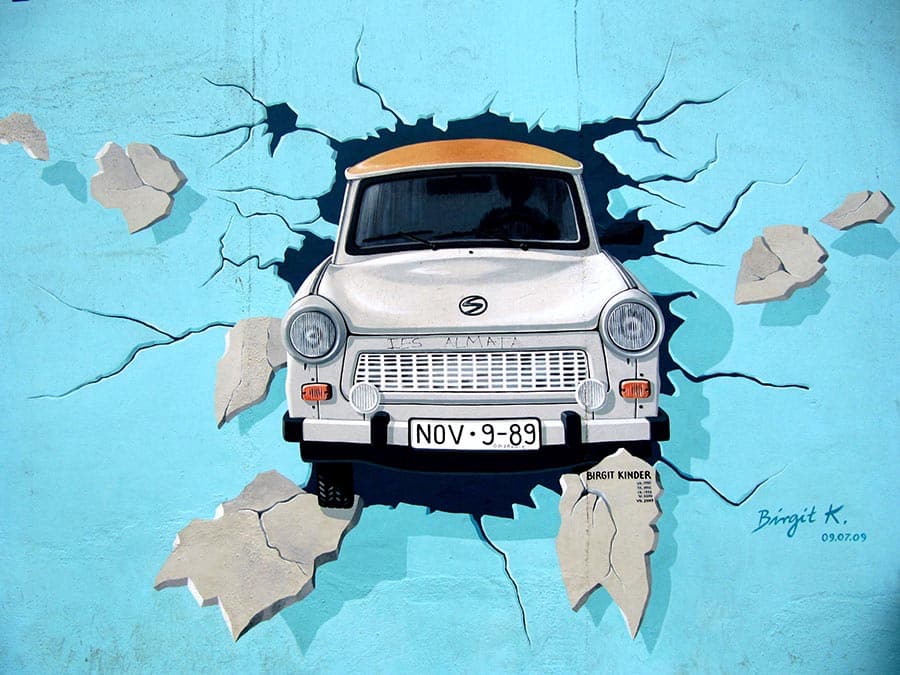
The longest remaining piece of the Berlin Wall can be found next to the River Spree – on the Friedrichshain side of the water – what is now known as the East Side Gallery. Often credited as the longest, largest, open-air gallery in the world, this 1.3km stretch is home to over 100 graffiti murals.
Featured in the 2003 movie Goodbye Lenin!, the East Side Gallery boasts many internationally famous works of wall art including a large section by French artist Thierry Noir, Dimitri Vrubel’s Brezhnev/Honecker kiss, and Birgit Kinder’s ‘Test the Best’ – depicting an East German Trabant crashing through the Berlin Wall.
Although not the only example of the Wall being transformed into use as a canvas for graffiti murals, the East Side Gallery is the most famous painted section. The gallery is actually on a piece of the former Hinterlandmauer (on the eastern side of the death strip), which means that the artwork here was all added after the end of the Cold War period.
05. Our Lovely Japanese Cherry Blossoms
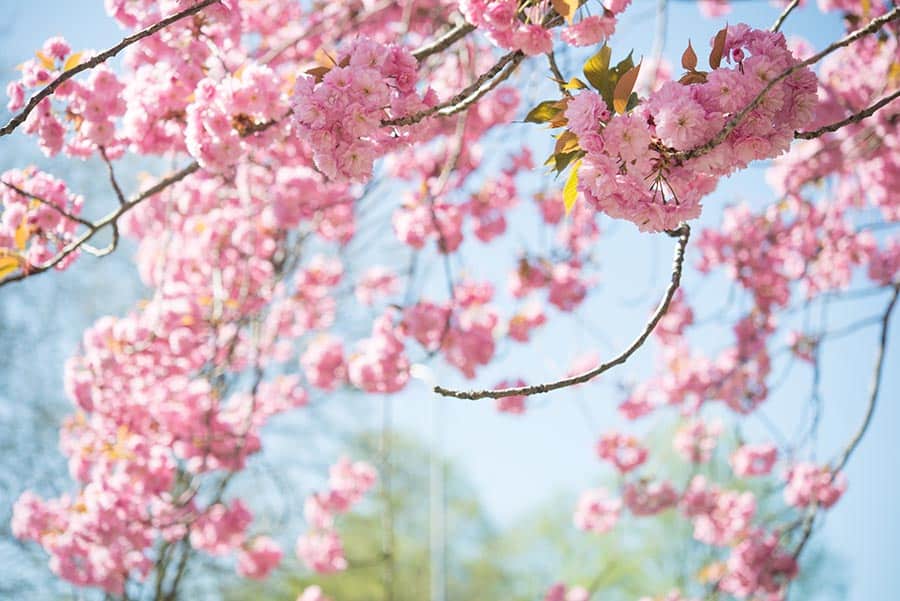
In November 1989, the first crossing point to open and allow East Berliners into the West of the city was at the Böse Brücke (formerly known as the Hindenberg Bridge) on Bornholmer Strasse.
That first night around 20,000 people made the journey through the now defunct border control and into the French sector of the city. If you visit the path of the Mauerweg as it runs underneath that bridge today, specifically in early spring, you’ll catch one of the most beautiful sights in the city – rows of blossoming Japanese cherry trees. A gift to Berlin in the 1990s from Japan, the story goes that during a television show in the country people were asked to donate money to buy these trees to celebrate German Reunification. And what you can see now is a result of that generosity.
There are actually two locations along the Mauerweg you can find these trees, the other being at the Lichterfelde Süd station.
Timing is everything, as the blossoms usually only remain for around 10 days.
06. The Berlin Wall Rabbits
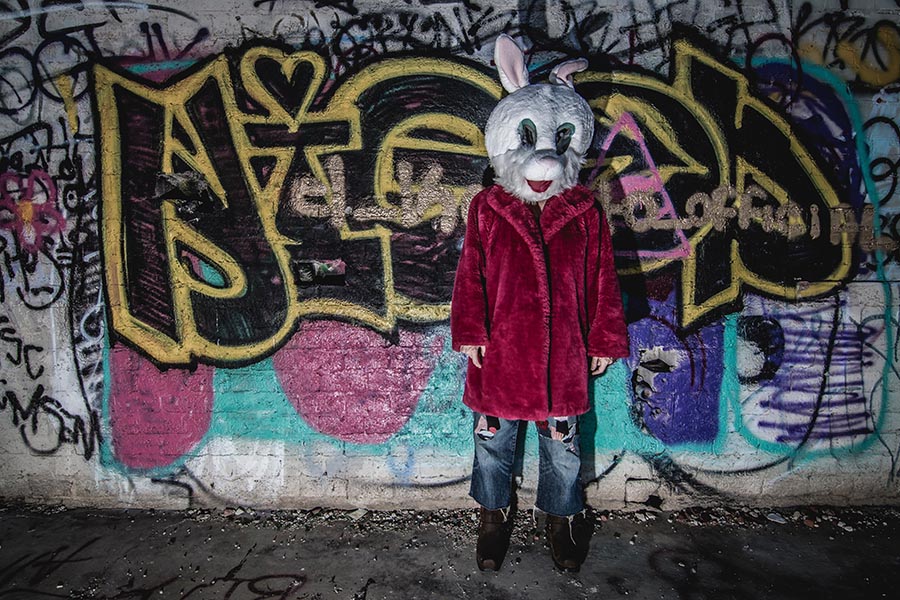
Like the Iron Curtain dividing East and West Germany, the death strip of the Berlin Wall became an ideal breeding ground for a certain kind of animal that thrived in these largely undisturbed open areas, off-limits to the general population – bunny rabbits.
The Oscar-nominated documentary, Rabbit a la Berlin, a kind of Cold War version of ‘Watership Down’, tells the story of these little furballs, the years they inhabited the death strip zone of the Berlin Wall, and their tragic demise following the end of the Cold War.
Dubbed by critics as an allegorical study of a totalitarian system, the film explores what happened to the rabbits when their natural habitat was suddenly disturbed and dismantled, as they fled from the jubilant celebrations and were chased into the streets and bushes by oblivious Berliners, only to die of stress and hunger. Remarkably, much like their fellow East Germans, many of the rabbits fled to the West of the city, and are now faced with dealing with life in a very different, post-Communist, world.
However, if you’re lucky you might still find some of them roaming the former death strip of the Wall.
07. The Souvenirs
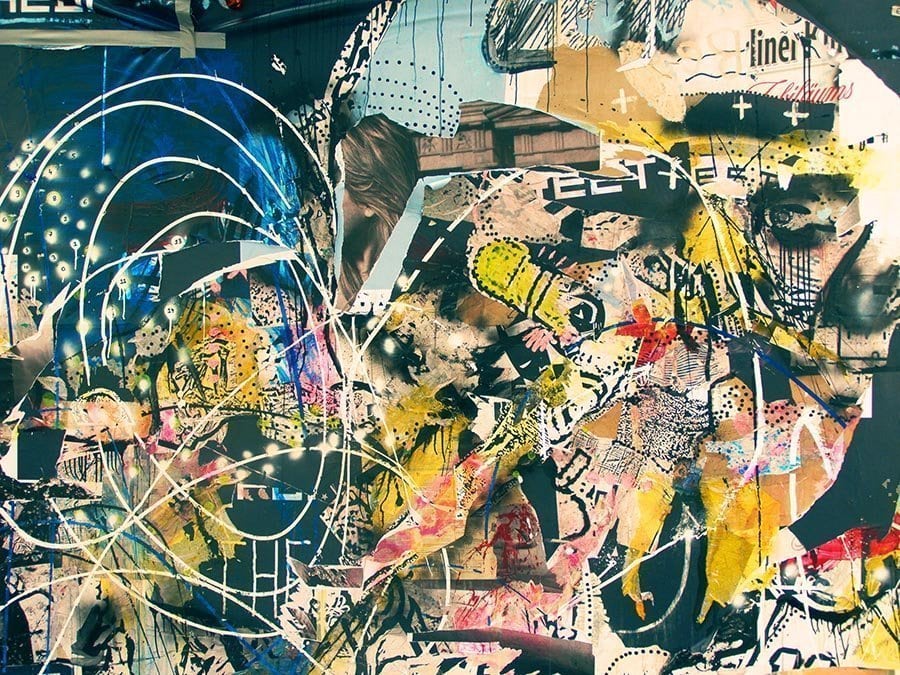
Tour Berlin for long enough and you’ll realise just how many shops there are selling pieces of the Berlin Wall.
Understandably, a piece of this former concrete barrier has been THE souvenir of choice for the millions of tourists who flock to the German capital every year. Sadly, many of the pieces on sale in the city are far from authentic. Telling which ones are can be near impossible, although there are some methods, to the expert eye.
Be sure to ask us… 😉
The only 100% reliable way to confirm the authenticity of a piece of the Wall is to ‘liberate’ it yourself from a remaining section, although be warned, removing any of the Berlin Wall is now a serious criminal offence.
In 2015, a football player for Hertha Berlin, Salomon Kalou, was threatened with a 10,000€ fine merely for posing with a hammer and chisel next to the Berlin Wall.
08. The Present Day Relevance
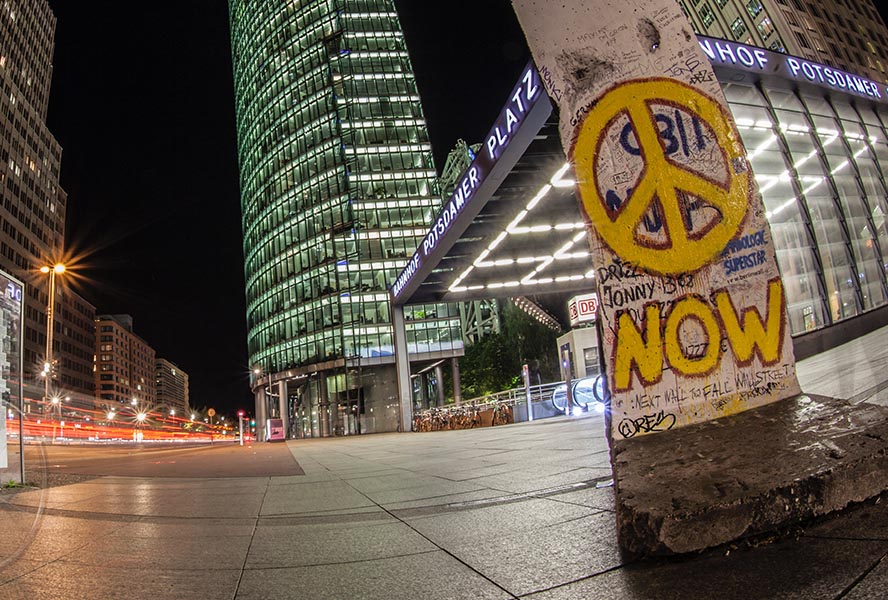
The undeniable reality of the Berlin Wall is that is worked.
It served its purpose.
In the months before its construction in 1961, thousands of East Germans fled to the West. With the complete encirclement of West Berlin, the government managed to reduce that exodus to almost nothing, for more than 28 years. Thousands of East Germans managed to escape, more than 5,000 between 1961 and 1989, but nothing like the vast numbers who were migrating West before the Berlin Wall was completed.
In Northern Ireland, the ‘peace lines’ first introduced in 1969 to separate Catholic and Protestant areas still stand. Although government initiatives are in place to dismantle all of the barriers by 2023, residents remain uncertain as to whether the efforts to minimise inter-communal violence will be reversed with their removal.
The Israeli West Bank barrier has been condemned by both the International Court of Justice and the United Nations General Assembly as a violation of international law and attempt to annex parts of Palestinian territory under the guise of security. Supporters of the wall, arguing for its legitimacy, point to the significant reduction in suicide bombings and attacks on Israel originating from the West Bank.
Since taking power in 2016 in the United States, Donald Trump’s administration has repeatedly promised to build a hard frontier on the US-Mexico border to stop illegal immigration.
These walls all differ in structure and purpose – but only the Berlin Wall bears the unique and lowly mark of its origin – as a border constructed to keep the population from escaping.
But like future proposed border re-enforcements, the Wall offers the same lesson, on the question of hard borders and to what extent governments will go to in order to secure these barriers.
09. It's Never Been Easier

Getting to Berlin has never been so easy. Trans-Atlantic flights are cheaper than ever, budget airlines throughout Europe have meant that the city is accessible from many major capital cities for the price of a short taxi ride – courtesy of Ryanair, Easyjet and Norwegian etc.
To understand the history of the 20th century is to be faced with understanding the history of Germany, the country that played such a large role in those 100 years, and of those major events in 20th-century European history. Most either happened in Berlin or were undeniably linked to the city.
To tour Berlin is to better understand why and how these events happened.
Divided Berlin played a central role in the Cold War period and no photo in a history book can do justice to seeing the Berlin Wall is all its concrete glory.
10. Because It Might Not Be There Forever
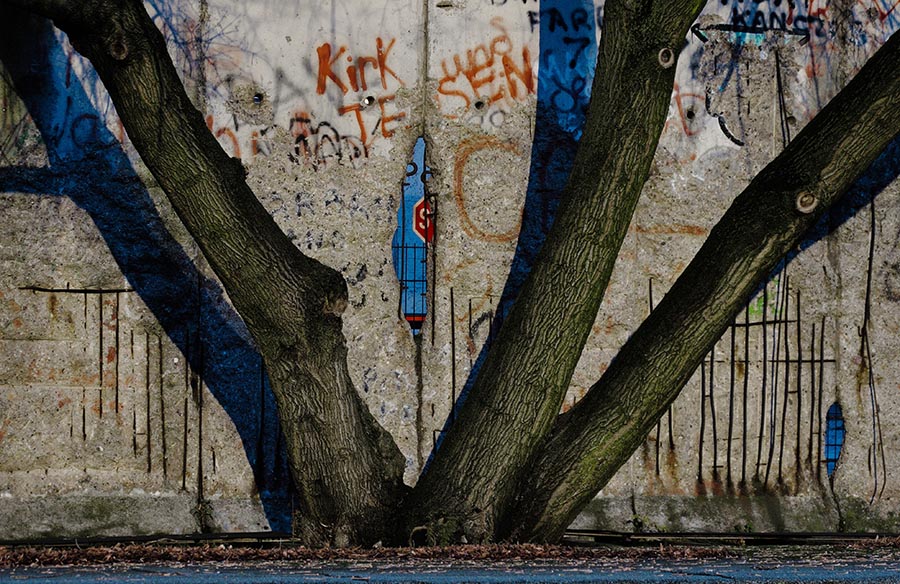
Natural erosion, vandalism and creeping gentrification are the Berlin Wall’s greatest enemies now.
The initial years following the collapse of the Soviet Union, and the Berlin Wall, as the hammer & sickle were replaced with the hammer & chisel, were a period of indecision for the German Federal government. Unaware of exactly how to preserve this Cold War relic and the form of dialogue necessary to engage with the subject.
It was not until 1998 that the Gedenkstätte Berliner Mauer on Bernauer Strasse finally opened as the official Berlin Wall museum.
By that time the area was so run down that a replacement guard tower had to be brought in (bought on eBay) to replace the former tower and create a replica of the death strip. The East Side Gallery, initially started as a private initiative to display artwork on the former Wall, is now run in co-operation with the government. The old murals added in the 1990s were repainted in 2009, although some of the original artists decided against being involved in the project again or were unavailable. Despite efforts to maintain the Wall and gallery, visitors soon began defacing the stretch of concrete with names, graffiti and tags.
In 2006, a 400 metre long section of the Berlin Wall at the East Side Gallery was moved to allow access to the new 02 arena (now Mercedez Benz arena) and in March 2013 a substantial part of the Wall was demolished to make way for the construction of a new apartment block – despite protests and the bizarre appearance of singer David Hasselhoff to show his support.
All leading to the strange situation where protests to preserve what was once protested against by East Germans have become a familiar sight in Berlin.
–
Further Links
www.berlin.de/mauer
www.chronik-der-mauer.de
www.berliner-mauer-gedenkstaette.de
www.mauermuseum.de
www.berlin-mauer.de
Our Related Tours
To learn more about the history of East German and life behind the Iron Curtain, have a look at our Republic Of Fear tours.
Think you already know enough about life in the ‘Workers and Peasants State’? Take our Republic Of Quiz and find out.

